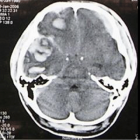Abstract
Research Article
Analysis of static, dynamic, and pelvic stability in junior badminton players of South Asia
Manan Vora*, Digpal Ranawat, Apoorva Tiwari and Manit Arora
Published: 19 October, 2018 | Volume 3 - Issue 4 | Pages: 080-088
Badminton is a sport that requires a player to perform while being still, as well as in motion. Stability is the ability to maintain or control joint movement or joint position, in the static as well as dynamic state. Improvement in stability could help maintain body control and proper posture positions during play. Accordingly, the study was proposed to analyze stability in junior badminton players and understand its importance. A total of 106 players from South Asia between the ages of 8 and 15 years were analyzed. Prokin 252N and Balance trunk MF systems of Tecnobody Italy were used in the assessment and static, dynamic, and pelvic stability was recorded. The variables used were gender, age, body mass index, and experience in years, level at which they play, current pain, and clicks & catches in the past 1 year. Our study showed that there was significant difference in pelvic stability in terms of age and level at which players compete. There were a variety of other factors which do not affect stability. There needs to be a greater focus on stability training as part of the development of junior badminton players.
Read Full Article HTML DOI: 10.29328/journal.jsmt.1001031 Cite this Article Read Full Article PDF
Keywords:
Biological age, Females, Physical activity
References
- Guillain JY. Badminton: An Illustrated History Jean-Yves Guillain Publibook Anglais Broche. Retrieved August 24, 2018; Ref.: https://goo.gl/Lf913S
- Mikkelsen F. Physical demands and muscle adaptation in elite badminton players, 1. Ref.: https://goo.gl/QuPgzL
- Omosegaard B. Design of Training using Scientific Data – A Practical Approach as a National Coach, 13. Ref.: https://goo.gl/fqp5Ca
- Sørensen K. A Biomechanical Analysis of Clear Strokes in Badminton Executed by Youth Players of Different Skill Levels, 2010; Ref.: https://goo.gl/rYrDPu
- Waddell DB, Gowitzke BA. Biomechanical principles applied to badminton power strokes. ISBS - Conference Proceedings Archive. 2000; 1. Ref.: https://goo.gl/ZBWyyj
- Gowitzke BA, Waddell DB. Biomechanical studies of badminton underarm. Power strokes, court movement, and flexibility -- a review. 2018: Ref.: https://goo.gl/Lc92SS
- Yang Y. Research of badminton forehand smash technology based on biomechanical analysis. Journal of Chemical and Pharmaceutical Research. 2014; 6: 962-969. Ref.: https://goo.gl/Wfb86x
- Xiang Liu, Kim W, Tan J. Badminton Smash | Anatomical Terms Of Motion | Rotation Around A Fixed Axis. 2018; Ref.: https://goo.gl/HsMHyT
- Hassan I. The Effect of Core Stability Training on Dynamic Balance and Smash Stroke Performance in Badminton Players. 2017 2: Ref.: https://goo.gl/Up5MZe
- Tsai CL, Chang SS. Biomechanical analysis of emg activity between badminton smash and drop shot. 1. Ref.: https://goo.gl/9JJKBP
- Sakurai S, Ohtsuki T. Muscle activity and accuracy of performance of the smash stroke in badminton with reference to skill and practice. J Sports Sci. 2000; 18: 901–914. Ref.: https://goo.gl/94m9h3
- Wonisch M, Hofmann P, Schwaberger G, von Duvillard SP, Klein W. Validation of a field test for the non-invasive determination of badminton specific aerobic performance. Br J Sports Med. 2013; 37: 115–118. Ref.: https://goo.gl/UZ7THJ
- Andersen L, Larsson B, Overgaard H, Aagaard P. Torque - Velocity characteristics and contractile rate of force development in elite badminton players. Eur J Sport Sci. 2007: 7: 127–134. Ref.: https://goo.gl/MNTaoP
- Faccini P, Dai Monte A. Physiologic demands of badminton match play. Am J Sports Med. 1996; 24(6 Suppl): S64-66. Ref.: https://goo.gl/dyjzp8
- Faude O, Meyer T, Rosenberger F, Fries M, Huber G, et al. Physiological characteristics of badminton match play. Eur J Appl Physiol. 2007; 100: 479–485. Ref.: https://goo.gl/b56YCT
- Ooi CH, Tan A, Ahmad A, Kwong KW, Sompong R, et al. Physiological characteristics of elite and sub-elite badminton players. J Sports Sci. 2009; 27: 1591–1599. Ref.: https://goo.gl/Njw8mP
- Høy K, Lindblad BE, Terkelsen CJ, Helleland HE, Terkelsen CJ. Badminton injuries--a prospective epidemiological and socioeconomic study. Br J Sports Med. 1994; 28: 276–279. Ref.: https://goo.gl/m1RMdL
- Goh SL, Mokhtar AH, Mohamad Ali MR. Badminton injuries in youth competitive players. J Sports Med Phys Fitness. 2013; 53: 65-70. Ref.: https://goo.gl/PP2g9n
- Hensley LD, Paup DC. A survey of badminton injuries. Br J Sports Med. 1979; 13: 156-160. Ref.: https://goo.gl/ur2nP4
- Fahlström M, Yeap JS, Alfredson H, Söderman K. Shoulder pain -- a common problem in world-class badminton players. Scandinavian Scand J Med Sci Sports. 2006; 16: 168-173. Ref.: https://goo.gl/u3CCSU
- Jørgensen U, Winge S. Injuries in badminton. Sports Med. 1990; 10: 59-64. Ref.: https://goo.gl/LTKNUU
- Krøner K, Schmidt SA, Nielsen AB, Yde J, Jakobsen BW, et al. Badminton injuries. Br J Sports Med. 24: 169–172. Ref.: https://goo.gl/zZRaVG
- Bressel E, Yonker JC, Kras J, Heath EM. Comparison of static and dynamic balance in female collegiate soccer, basketball, and gymnastics athletes. J Athl Train. 42; 42–46. Ref.: https://goo.gl/Bxj2Yc
- Ming-Min K, Qing L. The Interpretation of Functional Training and Its Application in Badminton. 2013; Ref.: https://goo.gl/9G4c1n
- Phomsoupha M, Laffaye G. The science of badminton: game characteristics, anthropometry, physiology, visual fitness and biomechanics. Sports Med. 2015; 45: 473-495. Ref.: https://goo.gl/as5wJL
- Laffaye G, Phomsoupha M, Dor F. Changes in the Game Characteristics of a Badminton Match: A Longitudinal Study through the Olympic Game Finals Analysis in Men’s Singles. J Sports Sci Med. 14: 584–590. Ref.: https://goo.gl/e7vF2Z
- Nikolaidis P. Core stability of male and female football players. 2010; 2: 30-33. Ref.: https://goo.gl/hWwkcw
- Zazulak BT, Ponce PL, Straub SJ, Medvecky MJ, Avedisian L, et al. Gender Comparison of Hip Muscle Activity During Single-Leg Landing. J Orthop Sports Phys Ther. 35; 292–299. Ref.: https://goo.gl/CwGNEM
- Rivas RC, Andries Junior O. Sexual dimorphism and its implications on the performance and planning of women's sports. Mov Percep. 2007; 7: 126-148. Ref.: https://goo.gl/otxiZT
- Granata KP, England SA. Stability of Dynamic Trunk Movement. Spine (Phila Pa 1976) 2006;. 31: E271–E276. Ref.: https://goo.gl/1Ghw2n
Figures:
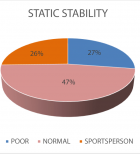
Figure 1
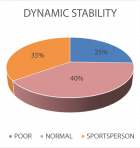
Figure 2
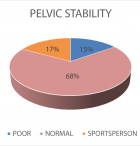
Figure 3
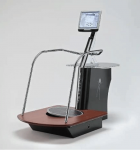
Figure 4

Figure 5
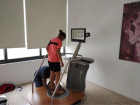
Figure 6

Figure 7

Figure 8

Figure 9
Similar Articles
Recently Viewed
-
COPD and low plasma vitamin D levels: Correlation or causality?Luca Gallelli*, Erika Cione,Stefania Zampogna, Gino Scalone. COPD and low plasma vitamin D levels: Correlation or causality? . J Pulmonol Respir Res. 2018: doi: 10.29328/journal.jprr.1001008; 2: 011-012
-
Environmental Factors Affecting the Concentration of DNA in Blood and Saliva Stains: A ReviewDivya Khorwal*, GK Mathur, Umema Ahmed, SS Daga. Environmental Factors Affecting the Concentration of DNA in Blood and Saliva Stains: A Review. J Forensic Sci Res. 2024: doi: 10.29328/journal.jfsr.1001057; 8: 009-015
-
Markov Chains of Molecular Processes of Biochemical MaterialsOrchidea Maria Lecian*. Markov Chains of Molecular Processes of Biochemical Materials. Int J Phys Res Appl. 2024: doi: 10.29328/journal.ijpra.1001076; 7: 001-005
-
Generation of Curved Spacetime in Quantum FieldSarfraj Khan*. Generation of Curved Spacetime in Quantum Field. Int J Phys Res Appl. 2024: doi: 10.29328/journal.ijpra.1001077; 7: 006-009
-
Optimizing Milk Safety: Applying Nuclear Techniques in X-ray Fluorescence Spectroscopy for Heavy Metal Quantification in Powdered Milk Consumed in SenegalPapa Macoumba Faye*, Djicknack Dione, Oumar Ndiaye, Moussa Hamady SY, Nogaye Ndiaye, Alassane Traore, Ababacar Sadikhe Ndao. Optimizing Milk Safety: Applying Nuclear Techniques in X-ray Fluorescence Spectroscopy for Heavy Metal Quantification in Powdered Milk Consumed in Senegal. Int J Phys Res Appl. 2024: doi: 10.29328/journal.ijpra.1001078; 7: 010-015
Most Viewed
-
Evaluation of Biostimulants Based on Recovered Protein Hydrolysates from Animal By-products as Plant Growth EnhancersH Pérez-Aguilar*, M Lacruz-Asaro, F Arán-Ais. Evaluation of Biostimulants Based on Recovered Protein Hydrolysates from Animal By-products as Plant Growth Enhancers. J Plant Sci Phytopathol. 2023 doi: 10.29328/journal.jpsp.1001104; 7: 042-047
-
Sinonasal Myxoma Extending into the Orbit in a 4-Year Old: A Case PresentationJulian A Purrinos*, Ramzi Younis. Sinonasal Myxoma Extending into the Orbit in a 4-Year Old: A Case Presentation. Arch Case Rep. 2024 doi: 10.29328/journal.acr.1001099; 8: 075-077
-
Feasibility study of magnetic sensing for detecting single-neuron action potentialsDenis Tonini,Kai Wu,Renata Saha,Jian-Ping Wang*. Feasibility study of magnetic sensing for detecting single-neuron action potentials. Ann Biomed Sci Eng. 2022 doi: 10.29328/journal.abse.1001018; 6: 019-029
-
Pediatric Dysgerminoma: Unveiling a Rare Ovarian TumorFaten Limaiem*, Khalil Saffar, Ahmed Halouani. Pediatric Dysgerminoma: Unveiling a Rare Ovarian Tumor. Arch Case Rep. 2024 doi: 10.29328/journal.acr.1001087; 8: 010-013
-
Physical activity can change the physiological and psychological circumstances during COVID-19 pandemic: A narrative reviewKhashayar Maroufi*. Physical activity can change the physiological and psychological circumstances during COVID-19 pandemic: A narrative review. J Sports Med Ther. 2021 doi: 10.29328/journal.jsmt.1001051; 6: 001-007

HSPI: We're glad you're here. Please click "create a new Query" if you are a new visitor to our website and need further information from us.
If you are already a member of our network and need to keep track of any developments regarding a question you have already submitted, click "take me to my Query."











